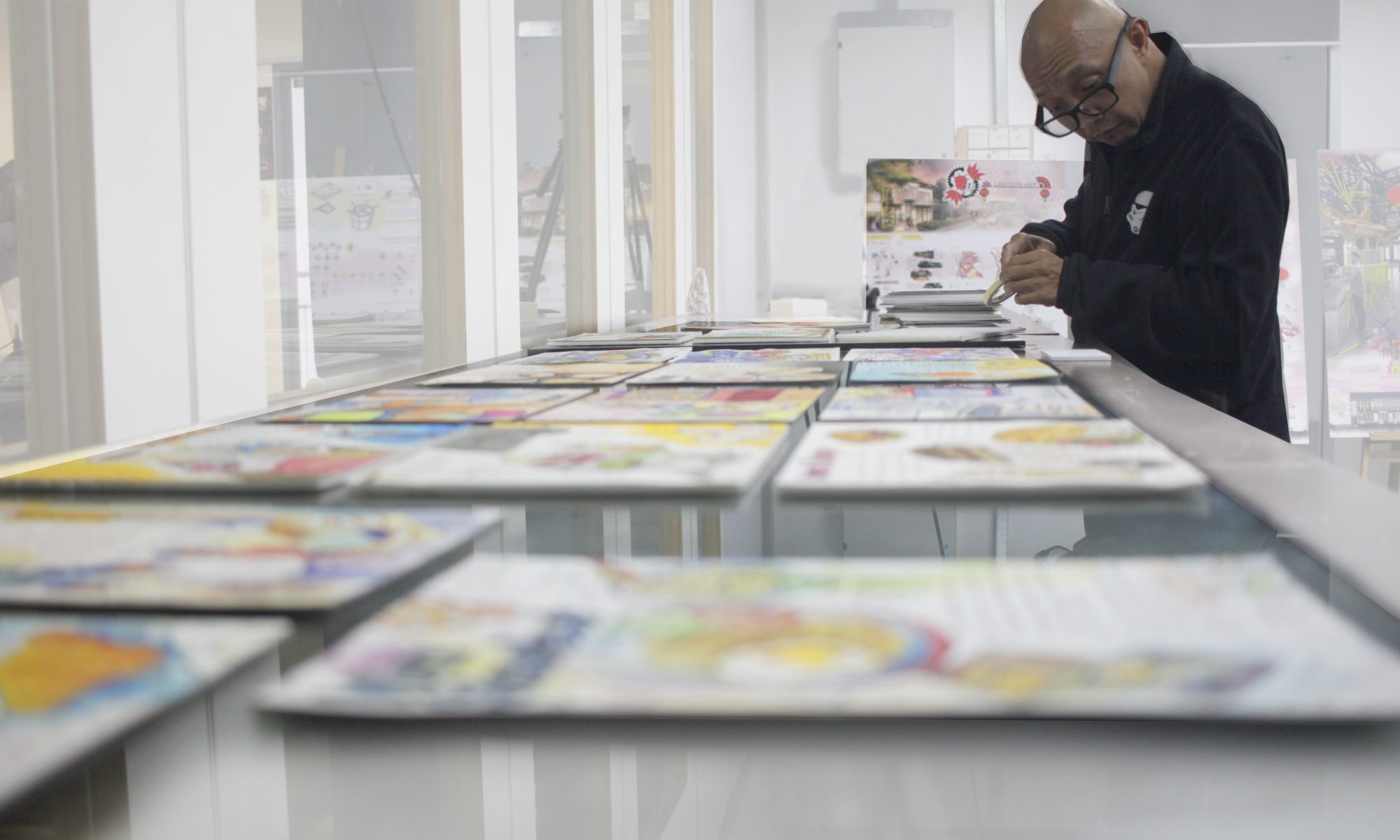My Design Principles students do not know the difference between art and design, even after reviewing examples and having lengthy discussions. This confusion is typical society wide. So what is the difference?
Design is a collaborative effort between a designer and a client — someone with a need for visual expertise. The designer has the ability/education/experience to take the client’s concerns and transform them into a meaningful visual solution. They are the eyes and hands that have the ability/knowledge/experience to think visually and the expertise to use any number of tools to create an appropriate solution.
On November 8, The Design School at Taylor’s University hosted a one-day exhibition entitled Design For Good that showcased a number of collaborative works that fulfilled a need that was either articulated by a client or for which the designers identified a need. These projects were often done between lecturers and students, or teams of lecturers, as well as lecturers with people outside of the school.
The exhibition offered ways to see how design does do good work; how it brings solutions to society whether through tangible work or screen-based solutions. These projects expand and explain and illustrate that design is not always a commercial endeavour.
Preparing the exhibition that showcased both traditional two-dimensional work as well as screen-based work in many formats. Images © Martin Chong, The Design School, Taylor’s University, 2019.
A group of interior design students together with interior design lecturers Norji Nasir and Edwin Nada Chomen, together with e-book technical supervisor Jeffrey Patrick, transformed a tedious/stodgy mini-library, located at Kampung Ulu Melaka, Serendah, Selangor, into a pleasant and vibrant reading space for the Suku Temuan Orang Asli. Students showcased their capabilities in designing the interior space as well as managing the mini-library project from ideation to the final execution in a series of videos and blog documentation. In addition, the students created an e-book to motivate learners’ reading through an interactive way.
In another project, lecturers Shamsul Hamimi Ab Rahman, Noorshafandi Abdul Rahim, and Noranis Ismail presented a tactile textile installation, Thermo-songket, that visually illustrates the ubiquitous Malay allegorical phrase, Melentur buluh biarlah dari rebungnya, that directly translates as To bend a bamboo, you must start from the shoot. This proverb is omnipresent in all aspects of Malaysian life and is visually unique in its hundreds of design and pattern variations — always shaped and contained within a repetitive geometric isosceles triangle. The simplicity of the geometric rigid shape allows for the experimentation in the translation of the patterns on a tactile surface. With the application of thermoforming technology, this piece not only creates a new layer of experience in appreciating the exquisite touch and craft of songket but also brings the traditions of Malaysian craft into the next century.
Charles Sharma Naidu and Yip Jinchi, lecturers, served as design consultants/research advisors to students Yang Chee Kent, conceptualiser/designer; Ron Chong and Sam Mun Hoe, designers to develop the game, Two Nations Power Conquest Game. Although this game revolves around war and conquering, the essence of its materialisation requires collaboration between the players. This strategy war game is inspired by research about two warring nations. The board game applies team strategy, decision making, and wit in order to cross borders, infiltrate, and claim power cubes. The game’s customizable game-play conditions, with intriguing rules of engagement, add to the fun experience.
The exhibition also included traditional visual work led by Redzwan Hisham Bidin, lecturer, together with students who have practiced drawing and compositional skills while observing people and surroundings. At the start of the semester, students did prompt-based weekly sketchbook assignments until they recognised the process as an important creative outlet that also encouraged them to see themselves developing as illustrators.
Lantern Art: A Wondermaker Community Hub was done in a collaboration between lecturers Aidatul Aida Ahmad Kushairi and Shamsul Hamimi Ab Rahman with students Soong Shin Siang and Chong Siong Loong Ron in the Bachelor in Interior Architecture Design Semester 03 Final Project and Bachelor of Design in Creative Media, Packaging and Merchandising Design. The Wondermaker project essentially visualises the notion of the maker/creator. It is a hub that not only produces commercialised hard and soft products but that also holds value within its own identity and branding. The purpose is not only to bring the culture of making Chinese lanterns alive but also to contribute to the surrounding communities.
Additionally, there were a number of screen-based works: Lecturers Dr Norhayati Saad, Shamsul Hamimi Ab Rahman, and Razif Mohamed brought to life the work of Dr. Mohamad Hariri Abdullah through a digital compilation using e-magazine and augmented reality (AR) to document the design process where ideas are transformed into a prototype. This work archived the ideas, inspirations, and exploration of Hariri’s creativity and passion in industrial design, particularly in transport design architecture and vehicle fabrication.
Timothy Long Tianjie with lecturers Diana Rosli, Aida Kushairi, and Martin Chong created an Awareness Campaign: Interior Design Education with Malaysian Institute of Interior Design (MIID) to create awareness of the interior design field that not only would help students to better understand the profession but could also encourage them to undertake the study of interior design.
Taylor’s students, guests to the colloquium that ran in parallel to the exhibition, and the general public actively participated in the works and hopefully benefited by experiencing design for good, and came away with a new perspective of how design is able to contribute to every level of society.





Well done Sherry and bon voyage once again. Bill Callahan